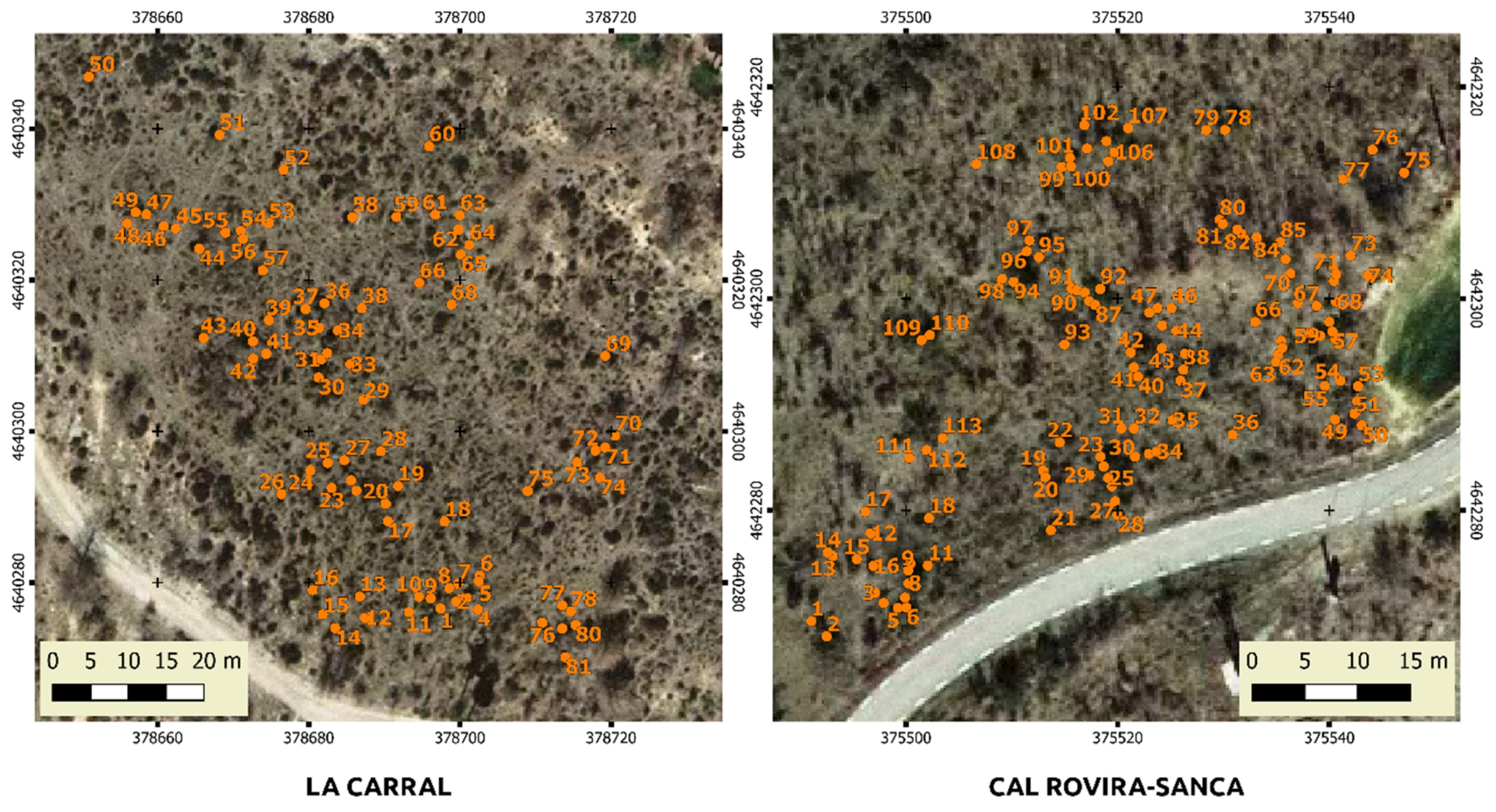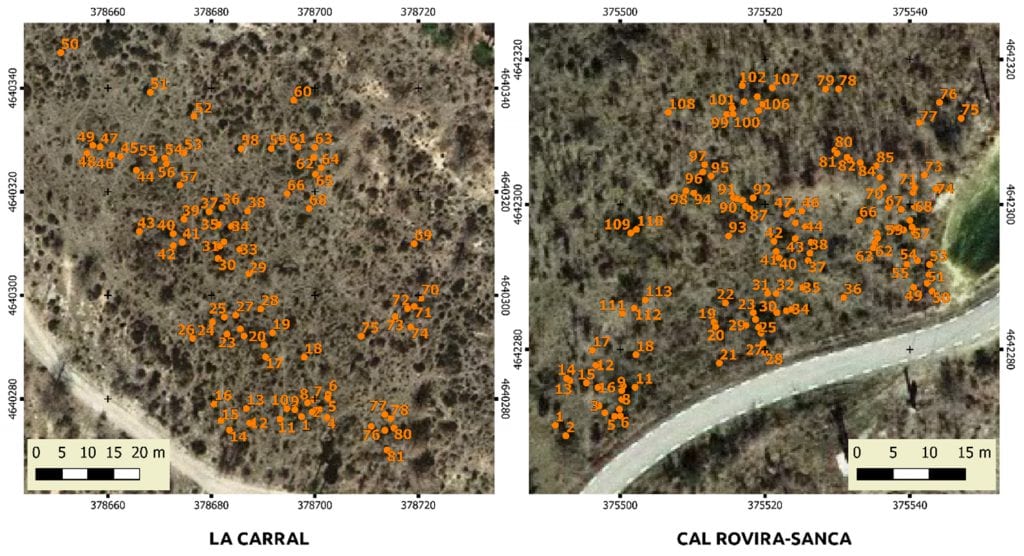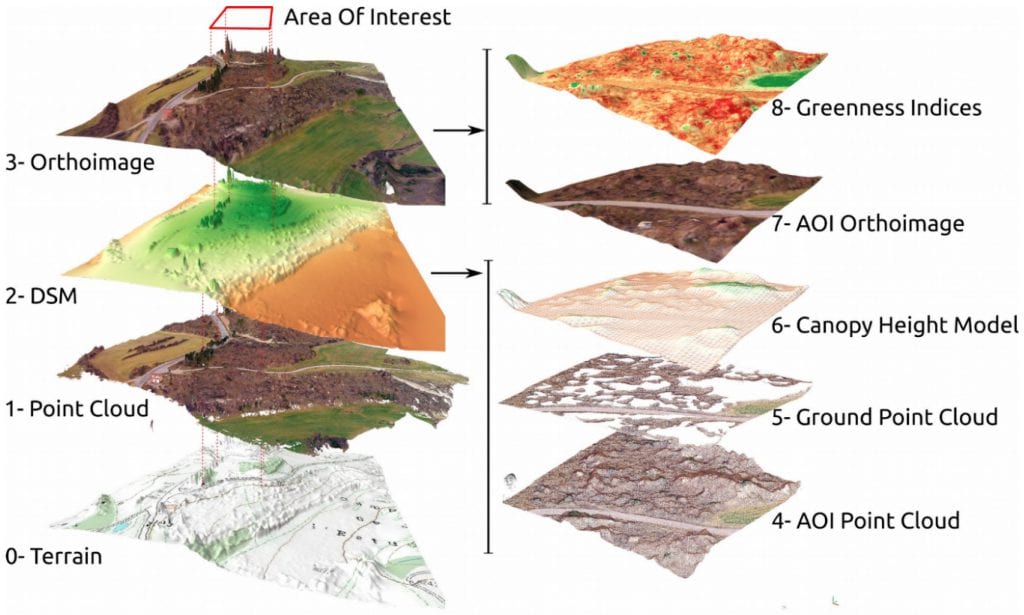
News
Drones Help Monitor Post-Fire Forest Regeneration
Over the past few years, unmanned aerial vehicles (UAVs) or drones have been increasingly used for research and application in both agriculture and forestry. However, most of this work has been devoted to improving accuracy and explanatory power, most of the time at the cost of usability and affordability.
However, a team of two authors from Spain has recently decided to test a low-cost UAV and a simple workflow in order to apply four different greenness indices to the monitoring of pine post-fire regeneration in a Mediterranean forest.
Forest Research for Post-Fire Regeneration in Catalonia, Spain
Speaking of, the authors of the paper focused on forest research as one of the fields where UAVs have potential benefits, allowing massive reduction of costs of airborne photography and LiDAR, as well as tweaking the approach technology to its final user.
“UAV deployment is fast and cheap, ensuring rapid responses to the needs of both academia and industry while allowing for repeated sampling with no limits on deployment periodicity. A new, tailor-cut telemetry sampling strategy is now possible, designed to fit the specific needs of each case study,” the authors of this paper explained.
The authors selected two sites and measured all of the pines within a preselected pilot, carrying winter flights at two flight heights – of 50 meters and 120 meters accordingly. The automatically normalized images entered a structure from motion (SfM) based photogrammetric software for restitution, and the obtained point cloud and orthomosaic processed in order to get a canopy height model and four different greenness indices.
Even though the accuracy on different methodologies is not the same, it is continuously increasing and plays a major focus of an important body of research on the UAV use in forestry. While this might be a sensible approach when working with economically exploited forests and woodlands, it also might hinder the development of forestry research in other areas or research fields (disturbance response etc.)

Aerial ortophotographs of both sites, with overlapped positions of all the pines found in the sampling areas.
The Use of a Low-Cost UAV (DJI Phantom 2) as a Monitoring Tool
The authors decided to explore the use of a low-cost UAV as a tool for monitoring the recovery of a Mediterranean forest after a strong disturbance. As they said:
“Our objective is to assess post-fire pine regeneration (Scots pine, Pinus sylvestris, and black pine, P. nigra) in an area affected by a wildfire where oak has become dominant. In order to identify pine cover in our area, we compare the use of four different greenness indices at two different flight heights, recorded areas and hence costs.”
The work was carried in the Lleida province in Catalonia, Spain, where an extensive wildfire burnt down more than 25,000 ha of pine-dominated woodland in 1998. The authors carried out two flights in each of the sites (50m and 120m) over terrain with a DJI Phantom 2 quadcopter. Their camera was set to shoot one picture every three and five seconds in each region, with an ISO of 100.

General workflow for the analysis of UAV imagery, as shown by its intermediate output images, point clouds and 3D models. A detailed workflow is provided as Figure S2-1. Orthoimages are shown draped on the obtained DSM, in order to improve figure display.
In the part named Image Analysis, the authors explain their approach. As they outline, their main aim was to get an easy workflow and to that end, minimize the parameter tweaking during the entire process. To do that, they adjusted all the aerial images with an image managing and editing software, after which they carried out 3D reconstruction within an advanced terrain-oriented software that creates 3D models.
UAVs Are Being Increasingly Used in Ecological and Conservation Studies
After the calculations of indices and graphs, the results of their research showed that even though there was a bit of high motion blur due to the light availability, the proportion of small trees was high for both species and higher for black pine. The greenness indices were also part of the research, as well as many other different statistics which showed that there are different models that can be carried out from this research.
As such, their conclusion is that UAVs are being increasingly used in ecological and conservation studies and monitoring, mostly because of their multiple advantages such as increased spatial resolution, lower costs, higher acquisition flexibility and higher temportal resolution.
“Low cost UAVs increase flexibility of use and reduce general costs as compared to professional platforms, and at the same time considerably reduce their learning slope, which has been deemed too steep. Yet, despite their low cost and ease of use, they accomplish spatial resolution way higher than those of aerial orthoimagery and provide useful results with a limited effort in image post-processing and analysis. This cost reduction is especially important for ecological studies and monitoring in non-profit forests and other habitats,” they concluded.
Citation: Greenness Indices from a Low-Cost UAV Imagery as Tools for Monitoring Post-Fire Forest Recovery, Asier R. Larrinaga and Lluis Brotons, Drones 2019, 3(1), 6; doi:10.3390/drones3010006 – https://www.mdpi.com/2504-446X/3/1/6/htm




















